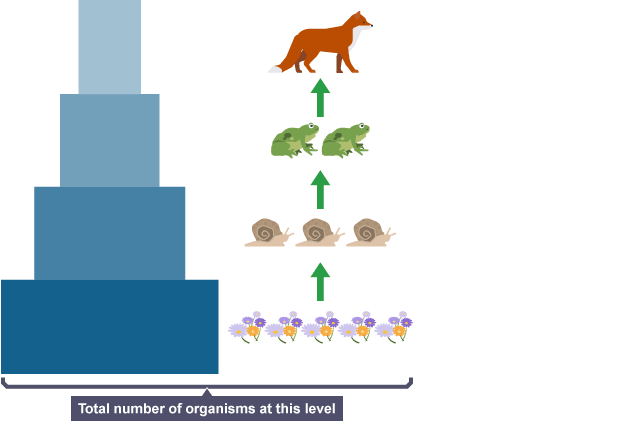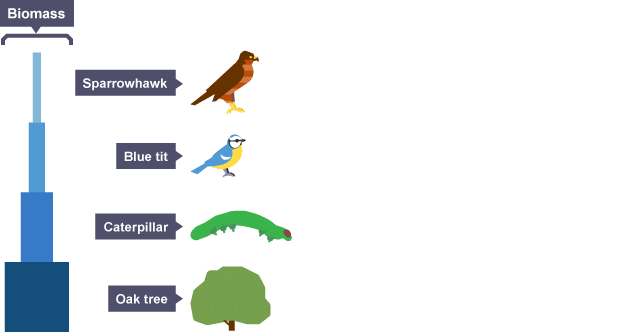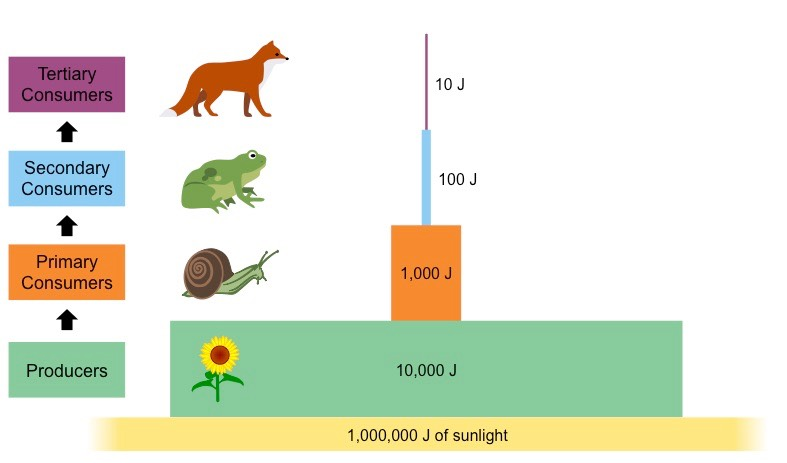10.2 Energy transfer through ecosystems
1/11
There's no tags or description
Looks like no tags are added yet.
Name | Mastery | Learn | Test | Matching | Spaced |
|---|
No study sessions yet.
12 Terms
What is a trophic level & what do the arrows represent in a food chain/web?
Trophic level = each stage in a food chain
Arrows represent the flow of energy through the food chain
What do food chains always start with?
Photosynthetic (autotrophic) producers
Why do all living organisms need energy & matter from their environment?
Matter is needed to make new cells (growth) & to create new organisms (reproduction)
Energy is needed to drive all the chemical & physical processes of life (e.g. active transport & movement)
What is the difference between detritus and detritivore?
Detritus = dead and waste matter that is not eaten by consumers
Detritivore = an animal that eats detritus
(saprobiont = a microbe, e.g. bacterium/fungus, that lives on detritus)
What is matter?
Measured in kilograms & comes in 3 different states: solid, liquid & gas
It cannot be created, destroyed or used up
The total amount of matter on Earth is constant (Earth is a closed system)
The matter of a living organism is called its biomass
What is energy?
Measured in joules & comes in many different forms (e.g. heat, light, kinetic, etc)
These forms can be inter-converted but energy can never be created, destroyed or used up
Energy can enter & leave the Earth (Earth is an open system)
Total amount of energy on Earth remains roughly constant
What are pyramids of number?
Show the numbers of organisms at each trophic level in a food chain
Widths of bars = numbers
In general, as you ascend the food chain, the size of the organisms increases & the number of organisms decreases

What are pyramids of biomass?
Consider the total mass (biomass) of living organisms at teach trophic level
The biomass should be dry mass → water stores no energy
Biomass is found by drying & weighing organisms
Usually pyramid shaped, since if a trophic level gains all its mass from the level below, then it cannot have more mass than that level

How much biomass is passed onto the next trophic level & why?
Only around 10% - most is lost at each trophic level due to:
some of the biomass is used in respiration & converted to carbon dioxide & water, which are excreted
some of the biomass is simply either not eaten or indigestible
What are pyramids of energy?
Represent the flow of energy into each trophic level, so describe a period of time
Always pyramidal & very shallow (energy transfer from one trophic level to the next is very inefficient)
Less than 10% of energy is passed onto the next level → “missing” energy is lost as heat

What is matter lost as in food chains?
Carbon dioxide due to respiration
Uneaten parts (e.g. skin, bones, teeth, shells, wood, bark)
Waste (e.g. faeces, urine)
What is energy lost as in food chains?
Chemical energy in the uneaten parts
Movement energy of consumers
Heat energy, especially in the homeothermic animals